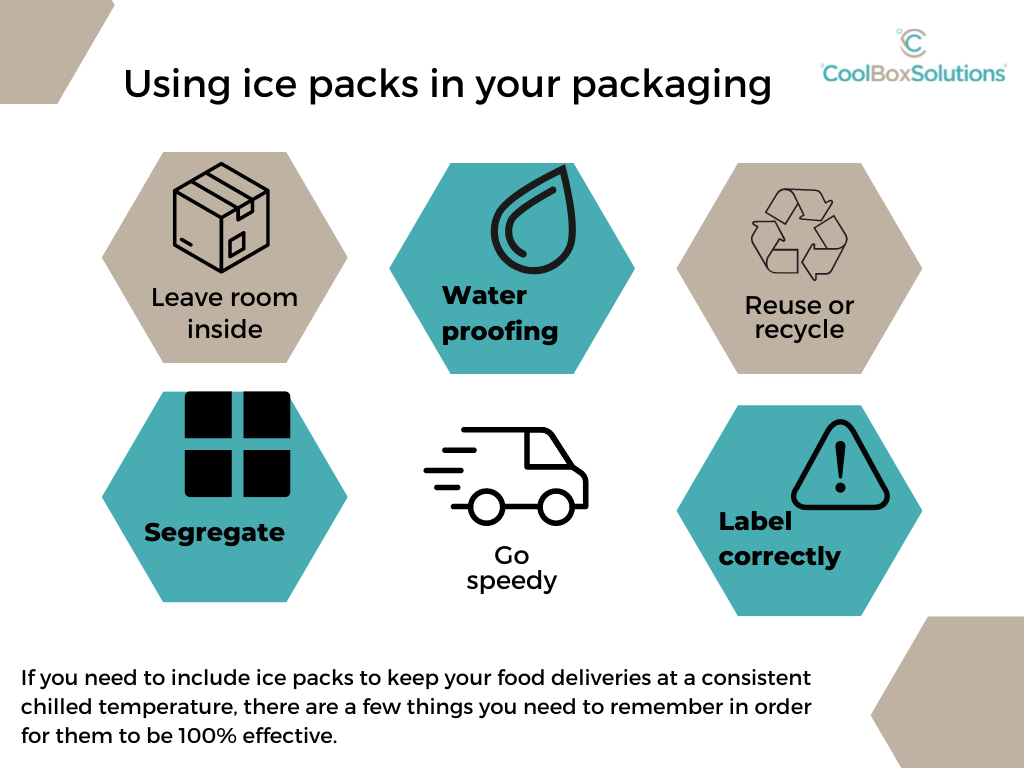
If you need to include ice packs to keep your food deliveries at a consistent chilled temperature, there are a few things you need to remember in order for them to be 100% effective.
Leave room inside
You need to make sure that there is enough room inside your parcel for the ice packs to fit. Sounds obvious but you’d be surprised how many people pack everything in neatly, only to realise that there isn’t enough room to place the ice packs. And it isn’t enough to just pop them in on top – they need to be packaged as part of the contents, otherwise they wont maintain a cool temperature throughout.
Waterproofing
It’s rare, but ice packs can burst. Whether they are filled with water or gel, they do pose a risk for leaking onto the contents if they do come open, so make sure everything inside is waterproofed, just in case. This could mean wrapping the contents inside a waterproof layer, or putting a divider between the contents and the ice packs where possible.
Segregate
You may be shipping items that require different shipping profiles. In this case, keep the items that need the cool temperatures in one area (but not touching), and anything that needs a warmer environment as far away from the chilled goods, and ice packs, as you can. You can also insulate items that need warmer areas, so they retain the heat inside the insulation.
Label correctly
Food items should be labelled when shipping, but you also need to label your packaging properly if you are using dry ice as a coolant. Dry ice is classed as a hazard substance, so anything containing this must contain a HAZMAT Class 9 Miscellaneous label as well as a Carbon Dioxide label, so all handling the package and its contents know that dry ice is present. This is in part why we always recommend using pure water or non-toxic gel ice packs, as this removes this need for labelling and also means your food parcel is completely non-toxic.
Go speedy
You want to choose a shipping solution that gets the package to its destination as soon as possible whilst still being financially viable with your margins. Not only does this look good to the end customer, it helps prevent against the risk of your ice packs thawing out and the food items becoming too warm (which adds to the risk of spoiling and wastage). Whilst ice packs do last typically a minimum of 24 hours or longer, the quicker the shipping, the better!
Think about reuse
If you are using ice packs, think about their reuse or recycling potential. Pure water is the best in terms of being able to safely pour it away, although some gel solutions can also be poured away (check with the supplier!). Also consider what the outside of the ice pack is made from; some recyclable plastics can only be recycled at specialist plants, and not put into domestic recycling waste. Again, check with your supplier. We may or may not have something coming very soon to make kerbside recycling for ice packs much easier….;)
